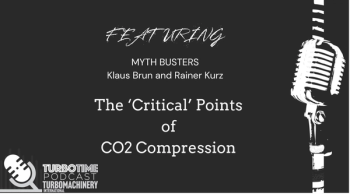
TURBO TIPS: CENTRIFUGAL PUMPS
CHALLENGES AND DIFFICULTIES OF PARALLEL OPERATION
Centrifugal pumps are used in many plants and facilities. Many are operated in parallel. There are risks, difficulties, and concerns to consider for parallel operation of pumps. There are factors and parameters which should be considered to mitigate these risks.
Many pumps, after all, have been damaged due to poor configuration, wrong selection, or operational carelessness in parallel operation. Further general knowledge on pump parallel operation is relatively low. There has been limited publication material available on this important topic.
Unfortunately, some engineers have been led to believe that pumps are like home appliances. They think they can put them in parallel operation and expect trouble-free operation. This is not true. The fact that pumps in parallel operation take suction from a common source and discharge into a common header is often overlooked. The fact that the pumps interact with each other is also poorly understood.
Different types of pump, of course, present different behaviours when in the parallel operation. As an example, so called “sensitive pumps”, which are more affected by operation far from BEP (best efficiency point), can be more troublesome when used in parallel operation.
WHY PARALLEL CONFIGURATION?
There have been many reasons to put pumps in parallel operation. Sometimes, it is to cover a wide range of flow requirements. In other situations, they are installed in parallel for standby requirements or emergency backup. In an expansion or renovation program, a few new pumps may be added to an existing set to increase pumping capacity.
When pumps run in parallel, they would be expected to operate against the same discharge head. The combined pump “head-capacity” performance curve is, theoretically, determined by adding the respective flow rates of each pump at a series of specific head values. However, this is purely theoretical. There are many practical factors and parameters which should be considered.
If pumps are not properly selected for parallel operation, it can lead to inefficient operation, pump unreli ability, damage, and other problems.
If pumps are not properly selected for parallel operation and all required provisions for potentially complicated operation are not foreseen, it can lead to inefficient operation, pump unreliability, damage, and other operational problems. When wrongly selected pumps are operated in parallel, one of the pumps might be driven outside of its allowable operating range (far from BEP), even near shutoff point. This can result in overheating and pump damage.
Parallel operation of identical pumps is a better-known topic than operation of dissimilar pumps. There are established rules for the parallel operation of identical pumps. Performance curves should be matched within specified tolerances. In other words, although pumps are theoretically identical, because of differences in manufacturing and tolerances, their curves are slightly different. The differences between curves should be limited to 2% to avoid problems.
DISSIMILAR PUMPS
Dissimilar pumps operating in parallel introduce engineering complexity. The head should be matched at rated point of each pump (not at the same volumetric flow rate points). Parallel operation of dissimilar pumps is most often seen in revamp, renovation, or expansion projects.
For a revamp/renovation case, the head of new pump rated point should be matched with the head of the existing pump rated point (each has its own volumetric flow rate) considering the elevation head difference and frictional head difference (at downstream) for each pump. The surrounding area of rated points should offer a suitable operating condition for all pumps.
When dissimilar pumps are operated in parallel, however, there is risk if any pump is pushed to operate below its minimum allowable flow rate. As a practical measure, the pump manufacturer should be asked to simulate operation and explain all operational details and guarantee trouble-free operation for all combinations of parallel operation. In addition, operating points for all operating scenarios should be plotted and compared between the minimum continuous flow and the end of curve. A full simulation exercise and a study report for all possible parallel operation cases should be requested.
PERFORMANCE CURVE
The shape of the “head–capacity” performance curve should be carefully considered when selecting pumps for parallel operation. If the pump curve droops (the head drops) as the flow is reduced towards shutoff point, there can be operational problems. In this case, when the first pump is started, a second pump may not be able to move from the shutoff point. This pump could run near shutoff, overheat, and possibly fail.
In other words, pumps in parallel operation work against the same discharge head. For a curve with more than one flow condition for a given head, a pump can be stuck near shutoff. This pump could fail over time. As a general rule, the performance curve should continuously rise to the shutoff point. In other words, pumps with head-capacity curves that droop towards shutoff point or have more than one flow condition for a given head, should not be operated in parallel.
Newsletter
Power your knowledge with the latest in turbine technology, engineering advances, and energy solutions—subscribe to Turbomachinery International today.





